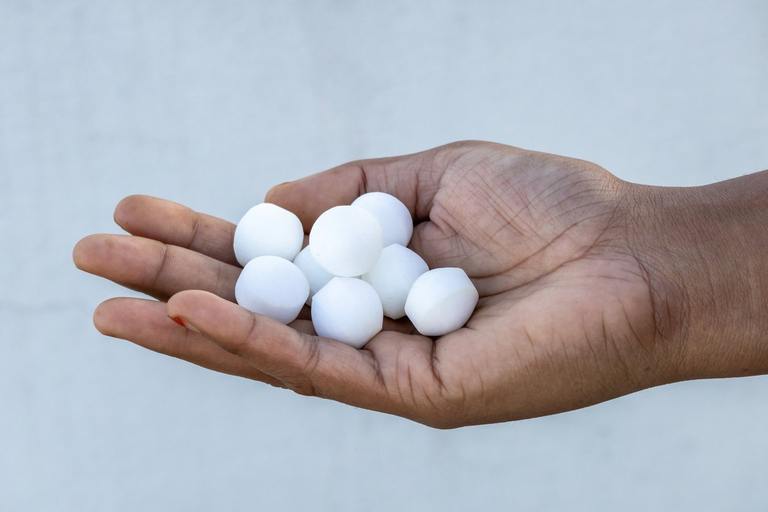Mothballs: Do They Really Work?
Published: December 2, 2024

Mothballs have been a household staple for generations, primarily used to protect clothing and other stored items from pests. However, their effectiveness and safety have come into question over the years. In this article, we will delve into what mothballs are, why they are used, and explore alternative pest control solutions that may be more effective and safer for your home environment.
What Are Mothballs?
Mothballs are small balls of chemical pesticide and deodorant, traditionally made from naphthalene or paradichlorobenzene. These chemicals release a strong odor that is toxic to moths and other insects when evaporated. The primary purpose of mothballs is to kill clothes moths, their larvae, and other fabric pests like carpet beetles.
How Do Mothballs Work?
When placed in a sealed environment like a storage container or closet, mothballs slowly sublimate—that is, they transition from a solid state directly into a gas. This gas is lethal to the insects it targets but requires an enclosed space to be effective. Open-air environments dilute the concentration of these gases, rendering them less effective against pests.

Why Are Mothballs Used?
The main reason people use mothballs is their perceived convenience and effectiveness in protecting valuable fabrics from being damaged by pests. They are particularly popular for long-term storage of seasonal clothing or heirloom textiles.
Types of Pests Mothballs Are Commonly Used For
Mothballs have traditionally been employed to combat a variety of pests, particularly those that damage fabrics. Here are some of the most common:
- Clothes Moths: The primary target for mothballs, clothes moths and their larvae feed on natural fibers such as wool, silk, and fur. Their presence can lead to significant damage in the form of holes in clothing and other textiles.
- Carpet Beetles: These insects can be just as destructive as clothes moths, with larvae that consume a wide range of materials including wool, leather, and feathers. Mothballs help deter these pests from infesting your stored items.
- Silverfish: Known for their affinity for starchy substances like book bindings and wallpaper glue, silverfish can also be discouraged by the chemicals released from mothballs.
- Cockroaches: While not primarily used for cockroach control, the strong odor of mothballs may act as a deterrent in some cases.
- Mice: Some people use mothballs with the belief that their strong smell will repel mice from certain areas; however, this is not an officially recommended or reliably effective method for rodent control.
- Snakes: Similarly, there is a common misconception that placing mothballs around homes or gardens will keep snakes at bay. However, this practice is not supported by scientific evidence and poses risks due to chemical exposure without guaranteed results.
While mothballs might offer temporary relief under specific conditions against some pests like fabric-damaging insects, they are neither safe nor effective solutions for larger animals such as mice or snakes. It's crucial to explore alternative pest management strategies tailored to each type of pest while ensuring safety within your home environment.

Risks Associated with Mothball Use
While mothballs can be effective under specific conditions, they come with several risks:
- Health Hazards: The chemicals in mothballs can pose significant health risks if inhaled or ingested by humans or pets.
- Environmental Impact: Improper disposal of mothballs can contaminate soil and water sources.
- Limited Scope: Mothballs only target certain types of fabric pests and do not address broader pest issues within the home.
Alternative Pest Control Solutions
Given the limitations and risks associated with mothball use, exploring alternative pest control methods can offer more comprehensive protection without compromising safety.
Integrated Pest Management (IPM)
Integrated Pest Management (IPM) is a holistic approach that combines multiple strategies to manage pest populations effectively:
- Inspection: Regularly inspect your home for signs of infestation.
- Sanitation: Keep living areas clean and free from food debris.
- Exclusion: Seal cracks and crevices where pests might enter.
- Biological Controls: Use natural predators or beneficial insects to control pest populations.
- Chemical Controls: When necessary, employ targeted pesticides that pose minimal risk to humans and pets.
Professional Pest Control Services
Engaging professional pest control services offers several advantages:
- Customized Treatments: Professionals assess your specific situation to provide tailored solutions.
- Educational Insights: Technicians educate you on preventing future infestations through proper practices.
- Safe Application: Experts use safe methods that minimize exposure to harmful chemicals while effectively managing pests.
For example, All U Need Pest Control provides comprehensive inspections followed by customized treatment plans designed not just for extermination but also for educating homeowners about ongoing prevention techniques.
Conclusion
While mothballs may seem like an easy solution for protecting your textiles from pests, their effectiveness is limited by various factors including environmental conditions and potential health risks. Considering alternative approaches such as Integrated Pest Management or professional pest control services can offer more reliable protection while ensuring the safety of your home environment. By understanding the 'how' and 'why' behind each method's action—much like how All U Need Pest Control educates its clients—you can make informed decisions that lead to lasting peace of mind in your household management efforts.